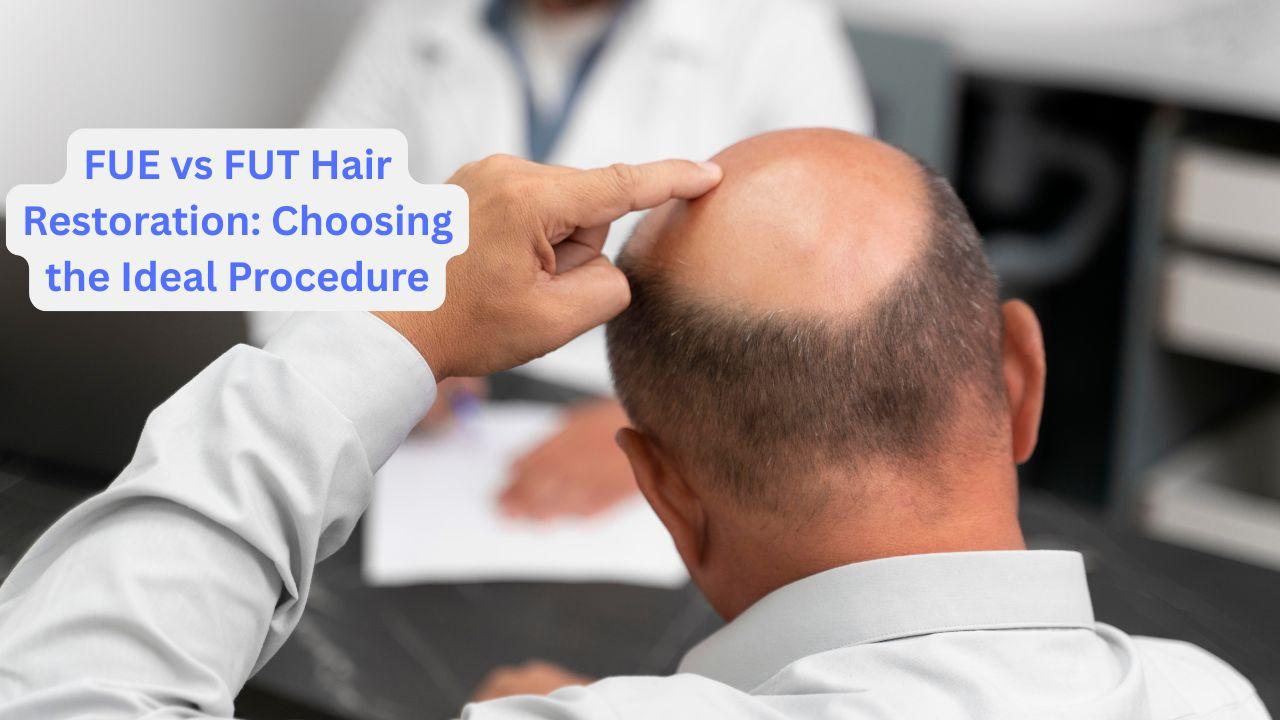FUE vs FUT Hair Restoration: Choosing the Ideal Procedure

Across the globe, countless men and women experience hair loss, which can profoundly impact their self-esteem and overall well-being. Fortunately, modern hair restoration techniques have made it possible to regain a fuller, natural-looking head of hair. Two of the most widely used methods are FUE (Follicular Unit Extraction) and FUT (Follicular Unit Transplantation) hair transplants, each offering unique advantages and considerations. Understanding how these techniques differ can help you select the most suitable approach for your hair restoration plan.
When comparing these options, the key question for many patients becomes: FUE vs FUT hair transplant—which is right for me?
Understanding the Techniques: FUE and FUT
Before making a decision, it’s essential to understand how each method works.
-
FUE (Follicular Unit Extraction): In this gentle procedure, hair follicles are individually taken from the donor area—usually the sides or back of the scalp—and implanted into areas experiencing hair loss. FUE leaves small, almost invisible dot-like scars and generally allows for a quicker recovery.
-
FUT (Follicular Unit Transplantation): Also called the strip method, FUT involves removing a narrow strip of scalp from the donor area. Follicles are then carefully separated and transplanted to the target area. FUT leaves a thin, linear scar that can be easily hidden beneath existing hair, making it a suitable option for those needing more grafts at once.
Both techniques aim to restore hair density naturally, but their approaches, recovery times and outcomes differ significantly.
Key Differences Between FUE and FUT
Procedure and Technique
FUE requires the precise extraction of individual follicles using micro-punch tools. Each graft is placed individually, making the procedure labour-intensive but minimally invasive. Unlike FUE, FUT involves harvesting a strip of scalp, allowing for the simultaneous harvesting of many follicles, which is ideal for patients requiring extensive hair restoration.
Scarring
Scarring, is a major factor in choosing between these techniques. FUE leaves tiny, nearly invisible dots, ideal for patients who prefer short hairstyles. The FUT procedure creates a linear scar, which can be easily covered with longer hair; however it may be noticeable with very short hairstyles.
Recovery Time
Because FUE avoids major incisions, recovery is typically faster, and most patients can resume normal routines shortly after the procedure. As FUT requires, a strip of scalp to be removed, recovery might be slower with some initial soreness or tightness in the donor region.
Comfort and Pain
Both procedures are performed under local anaesthesia. FUE tends to cause less post-operative discomfort because it doesn’t involve sutures or large incisions. FUT can be slightly more uncomfortable initially due to the linear incision, though pain is usually manageable.
Graft Quantity and Hair Density
This method often allows for more grafts to be harvested at once, which is particularly beneficial for individuals with significant hair thinning. FUE is ideal for smaller to moderate areas with the added benefit of minimal visible scarring.
Cost Considerations
FUE is typically more expensive because of the meticulous extraction process. FUT may be more cost-effective for larger sessions, although final costs depend on the number of grafts required and clinic-specific pricing.
Who is an Ideal Candidate?
-
FUE Candidates: Those who want minimal scarring, prefer short hairstyles or may require body hair transplants. FUE patients should also be comfortable with the possibility of multiple sessions for extensive coverage.
-
FUT Candidates: Individuals needing a large number of grafts in one session, unconcerned about a linear scar, or with enough scalp laxity for strip harvesting.
Experienced specialists at BHHR Clinic in Beverly Hills carefully evaluate each patient’s hair loss pattern, scalp condition, and personal goals to recommend the most suitable procedure. This ensures that results are optimised while minimising downtime and discomfort.
Advantages of Choosing BHHR Clinic
BHHR Clinic is known for combining medical precision with an artistic approach to hair restoration. Whether opting for FUE or FUT, the clinic focuses on delivering natural-looking results, patient comfort and thorough post-operative care. Patients from across the U.S., including those in New York, trust BHHR Clinic for its advanced techniques, skilled surgeons, and personalised treatment plans.
Making Your Decision: FUE or FUT?
Selecting FUE or FUT depends on the extent of hair loss, your desired results, budget, and tolerance for any visible scarring. FUE is excellent for those who prioritise minimal scarring and a faster recovery, while FUT can be ideal for larger sessions where maximising graft yield is the priority. Consulting with a specialist helps clarify expectations and ensures the procedure aligns with your lifestyle and aesthetic goals.
At BHHR Clinic, patients are guided through the decision-making process reviewing results from previous procedures and determining which method best suits their needs. This approach provides both confidence and peace of mind throughout the hair restoration journey.
Conclusion
Both FUE and FUT hair transplants are proven solutions for hair loss, each offering distinct advantages. Understanding how each technique works and consulting with experts enables patients to make an informed choice that aligns with their goals. With expert guidance and state-of-the-art techniques available at BHHR Clinic in Beverly Hills, individuals can achieve natural, long-lasting results.
If you’re considering hair restoration, exploring the options of FUE vs FUT hair transplant can be the first step toward reclaiming a fuller, confident head of hair.
- Art
- Causes
- Best Offers
- Crafts
- Dance
- Drinks
- Film
- Fitness
- Food
- Παιχνίδια
- Festival
- Gardening
- Health
- Κεντρική Σελίδα
- Literature
- Music
- Networking
- άλλο
- Party
- Religion
- Shopping
- Sports
- Theater
- Wellness



